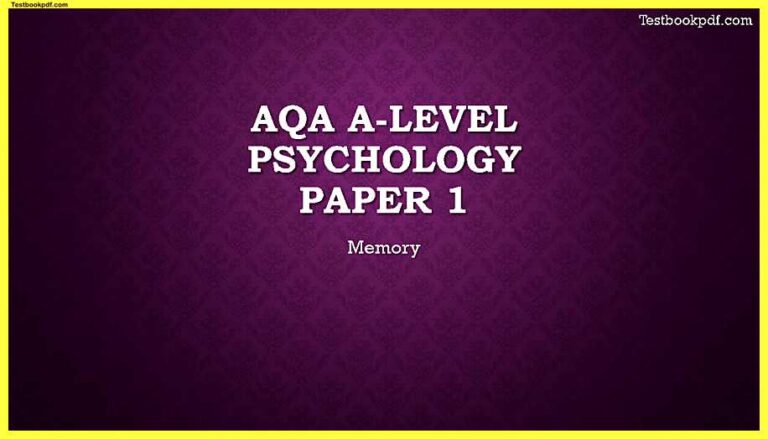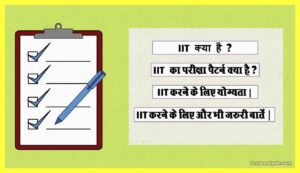A-Level Psychology Paper 1 Memory Pdf Download
In this article, we will discuss the topic Paper 1 Memory or we can say AQA A-Level Psychology Paper 1 Memory Pdf Download Aand you can download this page as a pdf in 1 click just go to the end of this article.
Multi-store model (Atkinson and Shiffrin)
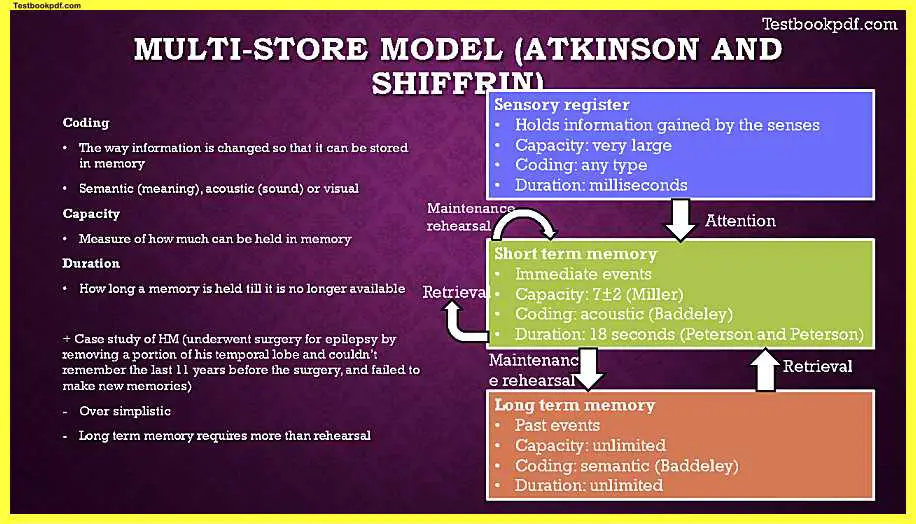
So first I’m just gonna explain some of coding and capacity and duration code coding is the way the information is actually changed so it can be stored in memory and there are three types there’s somatic which is looking at the meaning of the information also focuses on the meanings of situations such as them.
So that would sort of be like a memory that you have something Simon acoustic which sorts of the sound of some sound during memory and then visual which let’s see what you see and then going on to the multi-store model you have a sensory register which holds information gained five senses which for example mister eyes is mouth nose the capacity this is very very large something with so many senses that all gain the information all the time coding against any type because this covers every single sort of sense.
So they all receive information in different ways but it is only held for a few milliseconds obviously, once a smell goes away you can’t really smell it anymore can you then Smith us into the short-term memory you need to just pay attention to it so the short-term memory stores immediate events so things that happen relatively recently and have a capacity of seven plus or minus two.
So that’s all five to nine items at a time as found by Miller and then coating tends to be more acoustic as found by Baddeley and then the duration is about 18 seconds I was found by pizza and pizza I assume you’ll probably have more details about these studies in your textbook but if not feel free to comment down below and I will give you more detail on it or you’ve just searched up online and let’s make this into the long term memory you need to do maintenance rehearsal and then maintenance rehearsal can also take short term memory and sort of just keep refreshing it in that section of the memory and then obviously to remove it from there you just retreat it so look after memory this is past events that took place in while ago the capacity is limited.
So obviously you can hold as much information you want and then memory as to what this is CUDA semantically so obviously more like to remember things that actually have meaning to them and similar to the duration this is unlimited as well and then obviously to get the long term memory back to the short-term memory again is the process of retrieval.
Evaluation of the conditions of work
So in terms of the evaluation of conditions work week there is the taste of you underwent surgery at FLETC if I remove a portion of the temporal lobe but after the surgery, they discovered that he couldn’t remember the past years before the surgery and failed to make new memories also however is over simplistic and long term memory requires much more than rehearsal otherwise it would be so easy to we would really actually remember everything that we learn if it requires just the essential rehearsal.
Types of long-term memory
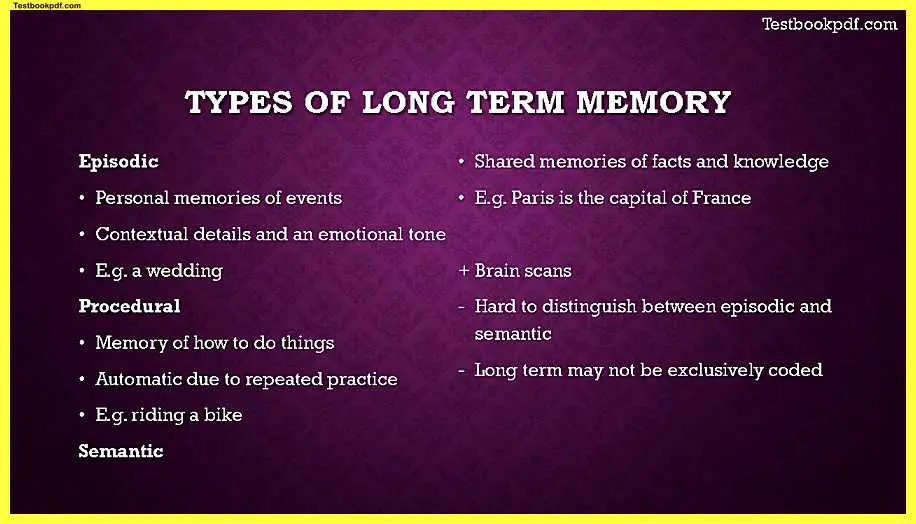
In terms of memory types of long-term memory, you caught X or the procedural and semantics so Episode II perfectly memories events in context with details and tends to have an emotional tone so for example if you’re attending a wedding so each individual about crates of episodic memory because everyone will remember it in a slightly different way and the procedure is just the memory of how to do things and tends to be automatic due to repeated practice so people there’s always be as also being found that even when people have brain damage they still are able to keep some procedural memories such as making a cup of tea or riding a bike and things but they can’t remember how they’re doing it they just are able to do it and then semantic is just shared memories of the facts of knowledge so basically, for example, the current is capital of France and then support for these brain scans.
Because when people when it’s being found when people remember different types of memories it lights up slightly different areas of the brain however it is hard to distinguish between episodic and semantic because obviously, they’re both so sure things, and then long-term may not be exclusively coded like this.
Working memory model (Baddeley and Hitch)
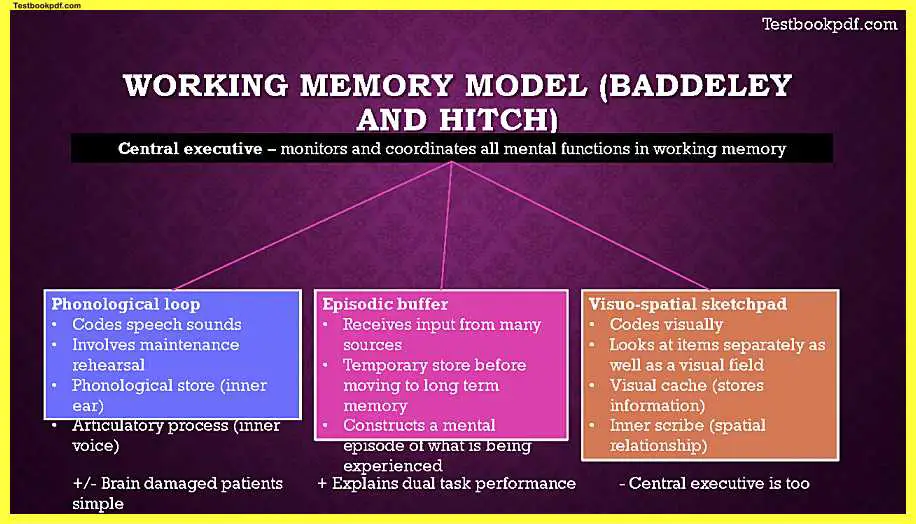
It starts off with the Central Executive which is the main hub of memory that monitors and coordinates all mental functions in the working memory I will mention where the working memory model focuses on purely short-term memory so basically and the articulatory process which is the inner voice and then on the other side of that you’ve got the fish my space fish your spatial sketchpad which codes especially looks at items separately as well as a visual field and then you’ve got the visual cache which stores information and then the inner scribe notes down the space relationship between items you see.
So this will actually help you piece together everything you see and create a space and then the episodic buffer which is in the middle receives input from the phonological loop and the visuospatial sketchpad and is the temporary store for this information for maybe it’s a long-term memory which obviously going by the previous model eaters looks at that is through the process of rehearsal and then adding all the information together constructs them into that side of what is being experienced and obviously attempt the evaluation there are positives and negatives of looking at brain-damaged patients they’ll see they’re useful for actually showing that different areas of the brain have different jobs and roles however obviously be brain-damaged patients they do not apply to everyone.
So obviously certain things that we’ll look at later such as plasticity like their brains may change depending on the damage that’s taking place this does explain responses obviously meaning its speech the speech and the visual side of things are kept separate which means they’re able to work individually together however the Central Executive is too simple and small in this model because obviously it’s such a key part of the short-term memory yet there’s really not much to it which just seems a bit odd
Explanations for forgetting: interference theory
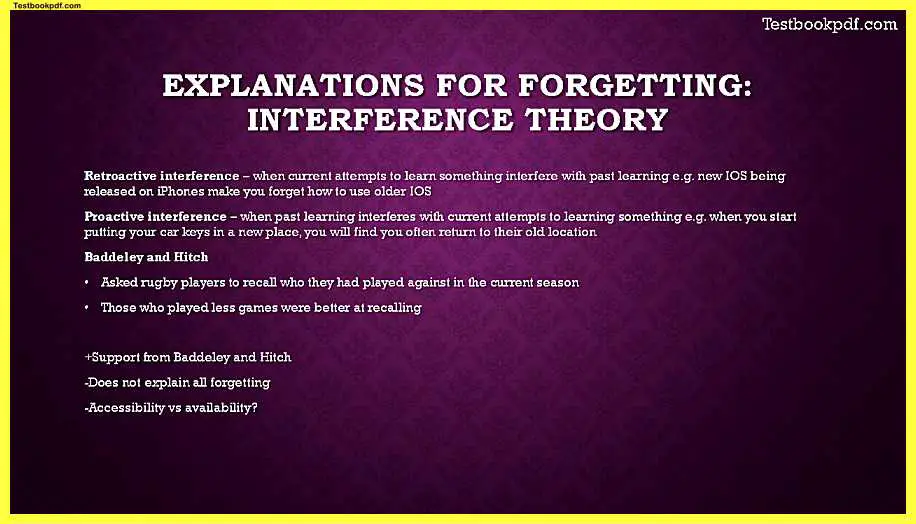
So you’ve got retroactive interference which is when current attempts to learn something new interfere with past learning so for example a new iOS being released onto iPhones makes you forget how to use older iOS and you may not feel as comfortable using older iOS when the new wireless has been introduced waiting and then contrary to that you’ve got the proactive interference so when past learning interferes with current attempts to learning something.
For example when you start putting your car keys into a new place in your house you often find you return to the old location that they were previously out and there’s some research support for this is badly in the hitch on trumpet players to recall who they had played against in the current season and found that those who had played fewer games were better at which is evidence for both retroactive and proactive interference obviously people may be made lose focus of information if they if it’s being replaced by new so this sort of so obviously this doesn’t explain all forgetting and there is the debate between whether it’s accessibility versus availability so maybe the information is actually there but you’re just not able to access it or is that actually just not available to the individual another explanation for forgetting is retrieval.
Explanations for forgetting: retrieval failure
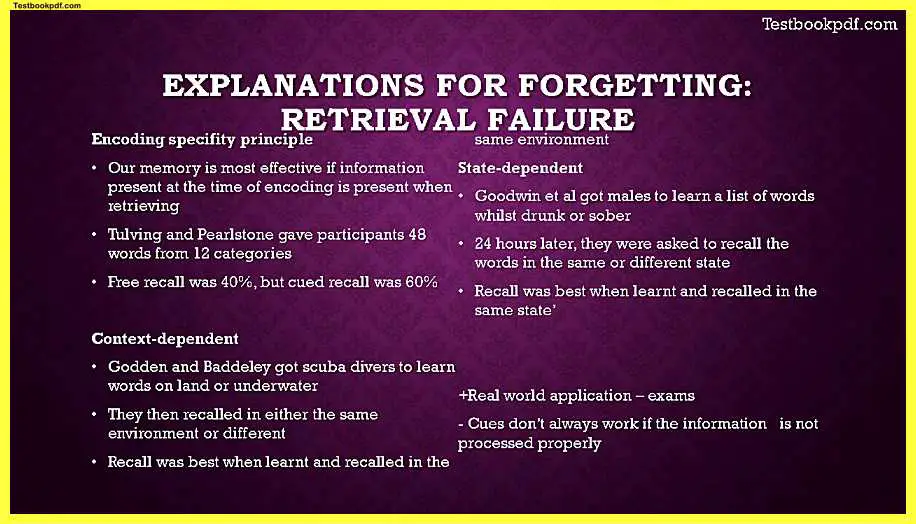
So for the encoding specificity principle which suggests our memory is most effective if information present at the time of encoding is present when receiving when retrieving and telling a Perl soon gave participants font eight words from 12 categories and found that the free recall so there was no queues or anything was 40% but when given a queue to recall the words it was 60% so obviously it tells the evaluation this could apply to exams.
So see you learn the information in the classroom but then you’re going to a separate example to take the exams at the end of the year so maybe students would actually achieve better if they were in the classroom setting the alert so then you’ve got dependent so I’ll see this similar to the exams situation that I just mentioned gotten and badly got scuba divers to learn words either on land or underwater and then they were asked to recall the implement their information either in the same environments before or different.
For example, if they learned words that they would either be asked to recall on land or under water and the recall was best when the information was learned and recalled in the same environment and then state-dependent and this is a very popular study it’s a bit working so to speak I’m so good at our got meals a group meals to learn a list of words whilst either drunk or sober and 24 hours later there were three called the words in the same or different state and found that recall was best when learned and recalled in the same state so obviously someone would have recalled better even if they were drunk both times than if they were drunk when learning and then so when we’re calling our cues don’t always work it’s the information it’s not processed properly, in fact, is affecting the accuracy of leading questions.
So these are questions that either by formal content suggests to the witness will answer aside or listen to the decided answer for example by saying who’s the criminal wearing a black jacket an individual might not necessarily but would because the question would assume that they did so we’ll say yes and again did they have brown hair you may not have noticed but because this question you might think they already have an individual in mind they want to prosecute for the crimes of you would say yes they have from hair all no depending on how you would see it post-event discussion which is a conversation between campuses for an interviewer and witness after a current takes place and obviously this is an issue
Factors affecting the accuracy of eyewitness testimony
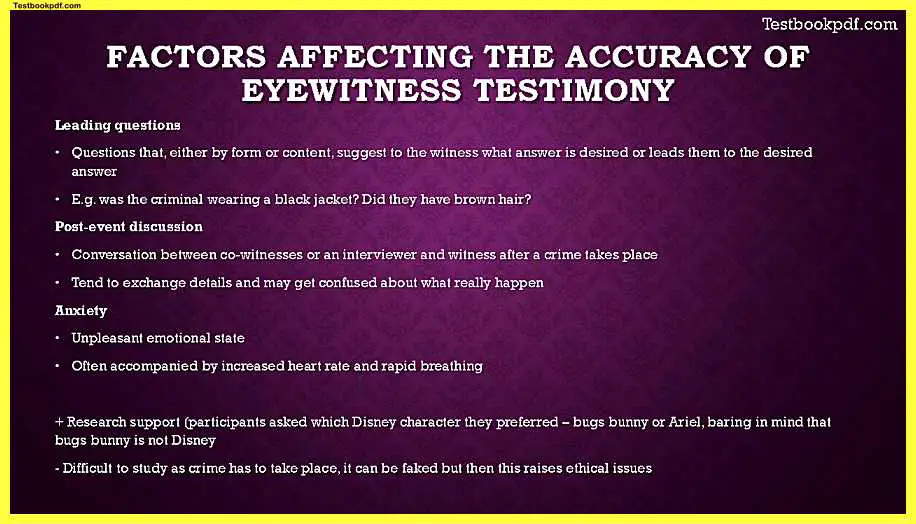
When it comes to their accuracy of eyewitness testimony because they all tend to exchange details and make it confused about what really happened because obviously they would have seen the event through two different perspectives and would have noticed things the other didn’t and then obviously anxiety which something that obviously people cannot help in a scary situation but is basically an unpleasant emotional state often accompanied by symptoms such as increased heart rate and rapid breathing there is research I cannot remember the name of the participants who did it of the research he did it sorry but the participants were asked which Disney character they preferred but for me or Ariel bearing in mind that bonds poems, not Disney and people actually did say Bugs Bunny for some of the time.
So that is a leading question is obviously there was assumed that Bugs Bunny was a Disney character however it’s difficult to study as the crime has to take place or there or it can be recreated the research so research purposes but obviously then this raises ethical issues and so looking deeper into leading questions
Leading questions (Loftus and Palmer, 1974)
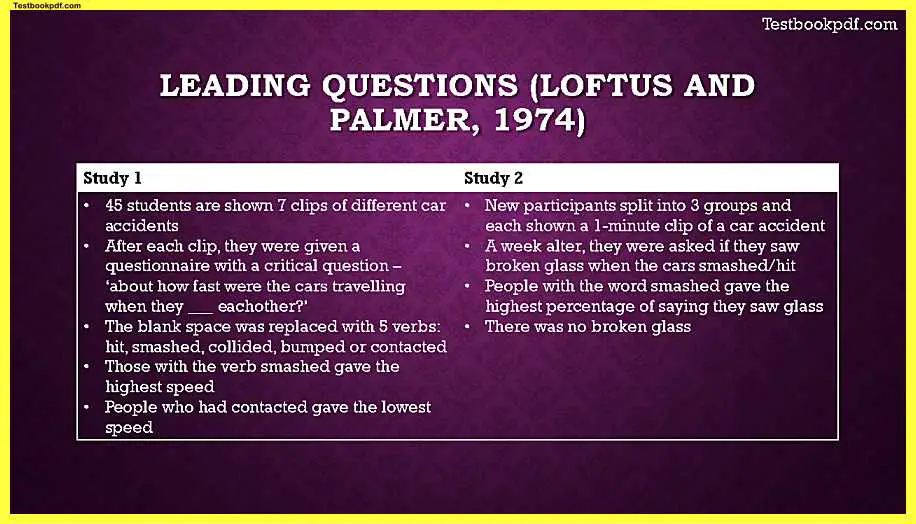
He did two studies the first one looks at 45 students who were shown seven clips of different car accidents after each clip they were given a questionnaire with a critical question in it which was help about how fast were the cars traveling when they knew each other and obviously that blank space without all the noise I just made was replaced with five verbs either hit smashed collided bumped or contacted and those are the verbs smashed in there so this all the question how about health bars with the cars traveling when they smashed each other gave the higher speed whereas those who had the word contacted gave the lower speed.
So obviously putting this verb in here changed how people to see received the accident that just took place then for their second study a group new group of participants fit in a muscle into three groups and each showing a one-minute clip on the car accident a week later they were asked if they saw broken glass when the car smashed or hit so again it’s similar to the first study when they do either given different nerves of the question and then people would be a worth smash in the high percentage of saying basal glass although there was actually no broken glass.
Anxiety (Johnson and Scott)
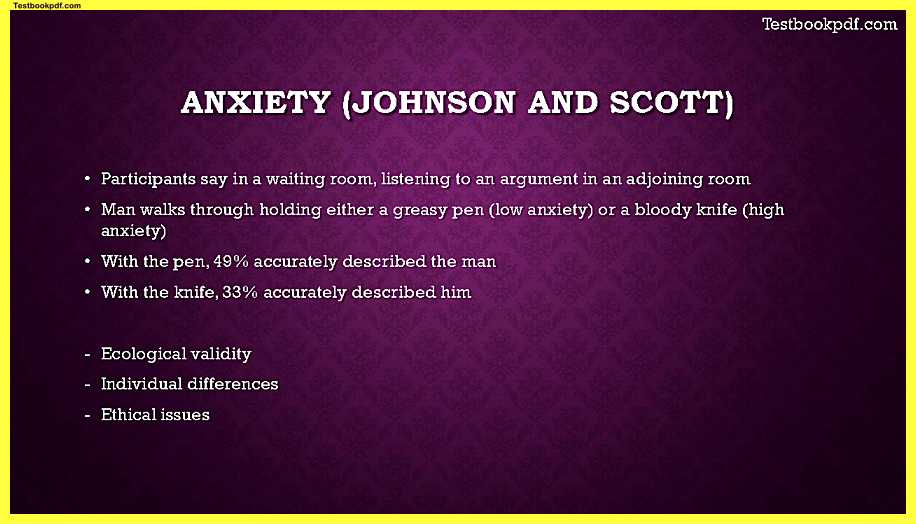
In the article Lytle and Moore, it is ah Mike Twohey Johnson. Scott created a study where participants were saturated and sat in the waiting room listening to an argument in an adjoining room. Hence, one of them leaves the room holding a greasy pen which is the lower anxiety condition for a bloody month which was the high anxiety condition with the pen those $0.41 are accurate descriptions of the man walking through however the knife 33% only accurate item which obviously Sheila’s ecological validity like with this actually happen in everyday life and individual differences obviously people might not be as anxious with a bloody knife with others the obvious ethical issues like obviously, any participants would not be aware that this would be taking place because obviously then that would skew the results. Hence, there are issues with their ideas there.
Improving the Accuracy of Eyewitness Testimony

We’ve got the comment of the interview which the police technique the interviewing witnesses encouraging them to recreate the original context of the quorum to increase the accessibility of stored information because obviously in a scary situation many people will tend to deny information their subconscious will hide the information from them.
So obviously the way that the cognitive interview tries to bring this information forward and make it more accessible is the mental reinstatement which is retracing the physical and psychological environment of the crime individuals are asked to report everything if any information could be important even if it is just well he had dirty shoes on or something they are asked to change the order of the event the obviously it may help them pick out new bits of information and to change perspectives so even if they own to report recall from other points of view such as the actual criminal that took who committed the crime all the from the perspective of another individual another witness.
So obviously this has real-world application this is used all the time in crimes in prosecution processes obviously is that the information should really be more of good quality rather than actually just because an individual may feel they need to just get a little information out that they might not be totally sure about things and so this is a very short video and today guys that is the memory section was very simple touch to it but obviously.
If you have any queries and concerns or anything just ask in the Comment Box thanks for reading this article.
